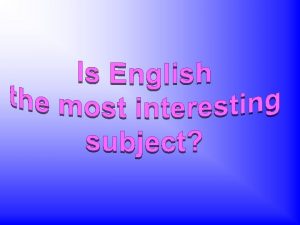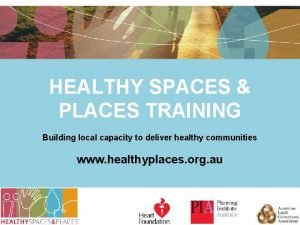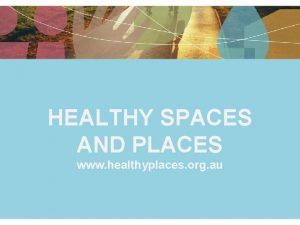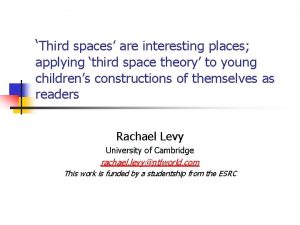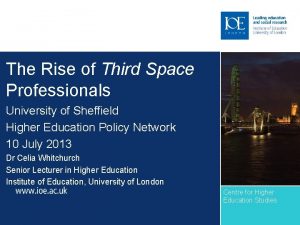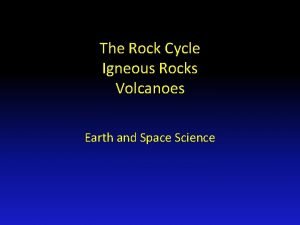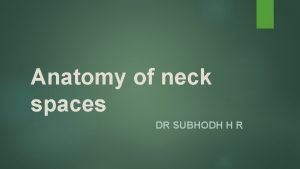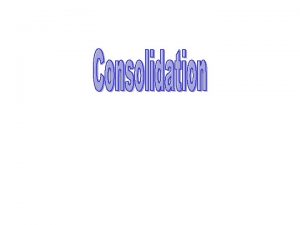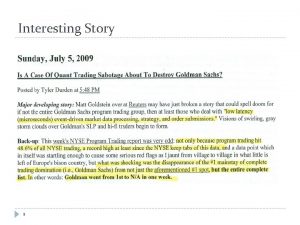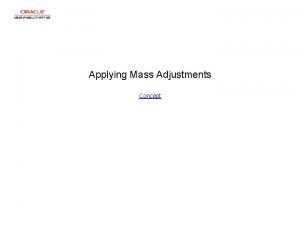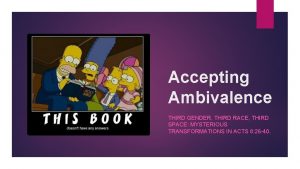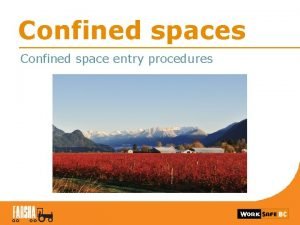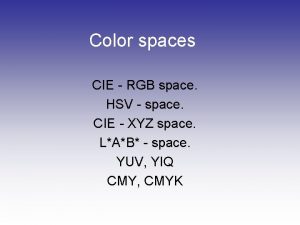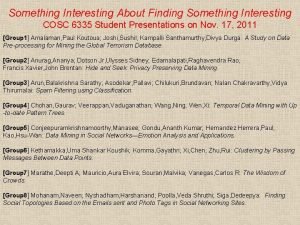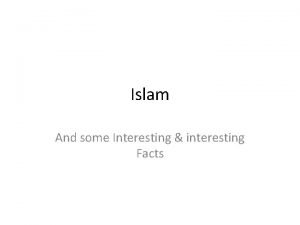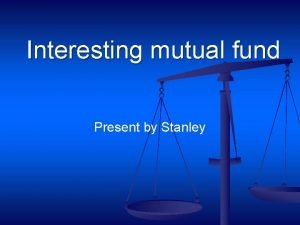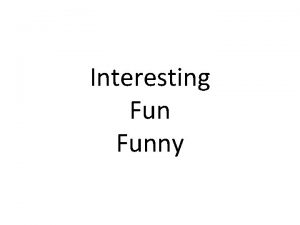Third spaces are interesting places applying third space














- Slides: 14

‘Third spaces’ are interesting places; applying ‘third space theory’ to young children’s constructions of themselves as readers Rachael Levy University of Cambridge rachael. levy@ntlworld. com This work is funded by a studentship from the ESRC

Outline of study • Focus on young children’s perceptions of themselves as readers • Understand how children’s perceptions are influenced by reading in home and school settings • Recognise shifting landscape of reading – eg. regular use of screen texts • Particular emphasis on the place of print within multi-media texts

Becoming a reader in a digital age; children’s perceptions of themselves as readers as they enter the formal education system Phase 1 Summer 2005 (Nursery and Reception) 2 Spring 2006 (N – Reception R – Year 1) 3 Summer 2006 Data Collection Children - Two-part interview (school) Small world play activity (school) Unstructured interview (home) Teachers –Interview Parents – Interview in home Children – Interview (school) Computer assisted interview (school) Observation (school) Teachers – Interview (new teacher) Children – Interview (school) Unstructured interview (home) Parents - Interview in home

What is ‘third space’ theory? Third space theory (or hybridity theory) examines “how being “in between” (Bhabha, 1994, p. 1) several different funds of knowledge and Discourse can be both productive and constraining in terms of one’s literate, social, and cultural practices – and ultimately ones identity development” (Moje et al, 2004, p 42) Third space First space Second space

Third space First space Second space Third space First space A navigational space, to cross and succeed in different discourse communities Second space Third space First space Build bridges between knowledges and Discourses A space of cultural, social and epistemological change, where competing knowledges ‘converse’ and are challenged Second space

The Nursery Children Third spaces in their constructions of reading Shaun Letters, words and digital literacies Caitlyn Books David Popular culture

Shaun: Third space in between discourses of home and school Third space Enjoys using phonics at home and at school Enjoys reading his scheme books at home and at school Able to transfer digital literacy skills between home and school contexts Home Discourse Enjoys phonics Enjoys reading scheme books Fluent user of digital technology School Discourse Greater emphasis on decoding skills ‘Reading’, perceived as reading scheme books Computer texts available

Caitlyn: Third space in between discourses of home and school Third space Devalues own reading abilities Views ‘schooled reading’ as ‘hard work’ Digital literacy skills largely confined to home Home Discourse Expressive creator of narrative based on pictures in books. Enjoys books. Fluent user of computer technology School Discourse Sees ‘reading’ as decoding print – sees self as unable to decode ‘Reading’ is related to scheme books Rarely uses computer

The Nursery Children Third spaces in their constructions of reading Shaun Letters, words and digital literacies Caitlyn Books David Popular culture

Implications n n n The individuality of the children’s constructions of reading Building on children’s constructions Challenge the Rose Report – greater emphasis on synthetic phonics

Full Paper n Levy (in press), ’Third spaces are interesting places, applying ‘third space theory’ to nursery-aged children’s constructions of themselves as readers’, Journal of Early Childhood Literacy, (Forthcoming 2008)

Thank you Rachael Levy rachael. levy@ntlworld. com

Synthetic Phonics • Synthetic phonics is often described as a "back to basics" system of teaching children to read. It is a sounds-based approach that first teaches children the sounds of letters and how they blend into words, before moving to letter combinations that make up words. Phonics was the dominant teaching system until the 1960 s when more fashionable methods were developed, like teaching children to learn whole words "by rote" without mastering the alphabet.

Synthetic phonics cont. • Jim Rose, a former Ofsted inspector, was recently asked by the education secretary to conduct a review into the way children in England are taught to read and write following the impressive results of a trial using synthetic phonics in Scotland. • His research drew on evidence from practitioners, researchers, published reports and data, and submissions. An interim report, published in December, concluded that there should be a bigger and more systematic role for phonics in schools. His final recommendations - that synthetic phonics teaching should be enforced in the national curriculum – have now been published.
 Interesting more interesting the most interesting
Interesting more interesting the most interesting Antigentest åre
Antigentest åre Healthy spaces and places
Healthy spaces and places Healthy spaces and places
Healthy spaces and places Gj mount classification
Gj mount classification Mount classification of dental caries
Mount classification of dental caries What is third space
What is third space Third space professionals
Third space professionals Cartesian space vs joint space
Cartesian space vs joint space Joint space vs cartesian space
Joint space vs cartesian space Ndc to screen space
Ndc to screen space Space junk the space age began
Space junk the space age began Camera space to world space
Camera space to world space Hardened magma squeezed into vertical spaces between rocks
Hardened magma squeezed into vertical spaces between rocks Danger space of neck
Danger space of neck
